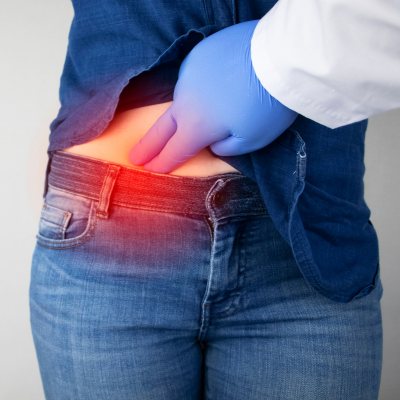GENERAL SURGERY

Laparoscopic Cholecystectomy
Laparoscopic cholecystectomy (Lap. cholecystectomy) is a minimally invasive procedure to remove the gallbladder, typically due to gallstones or inflammation. The surgeon makes small incisions in the abdomen and uses a laparoscope to visualize the area, allowing for precise removal of the gallbladder with minimal disruption to surrounding tissues.
Benefits of this technique include reduced postoperative pain, shorter recovery times, and less scarring compared to open surgery. Most patients can resume normal activities within a week. Our dedicated surgical team prioritizes patient safety and comfort, ensuring effective treatment and support throughout the recovery process.

Varicose Veins
Varicose veins are enlarged, twisted veins that commonly appear in the legs due to weakened valves and poor blood flow. They can cause discomfort, aching, and swelling, and may lead to complications like ulcers or blood clots. Risk factors include genetics, prolonged standing, obesity, and hormonal changes.
Treatment options vary based on severity and symptoms. Conservative measures include lifestyle changes, compression stockings, and exercise. For more advanced cases, medical procedures such as sclerotherapy, laser therapy, or endovenous thermal ablation may be recommended to close or remove affected veins. Our team is committed to providing effective solutions to improve circulation and enhance quality of life.

Fistula Surgery
Fistula surgery is a procedure aimed at repairing abnormal connections between body structures, such as anal or urinary fistulas. The most common technique is fistulotomy, where the fistula tract is opened to promote healing from the inside out. Other methods include seton placement, which involves inserting a drain to manage infection while allowing the fistula to heal, and flap repair, using tissue from surrounding areas to close the fistula. Recovery typically involves managing discomfort and adhering to postoperative care instructions. Our experienced surgical team is dedicated to providing comprehensive care, ensuring effective treatment and a smooth recovery for patients.

Piles Surgery
Piles surgery, or hemorrhoidectomy, is a procedure designed to remove hemorrhoids when conservative treatments are ineffective or the condition is severe. Performed under local or general anesthesia, the surgery can take different forms. The most common method is a traditional hemorrhoidectomy, which involves the surgical removal of excess tissue causing bleeding or protrusion. Another approach is stapled hemorrhoidopexy, where a stapling device is used to reposition the hemorrhoids back into the rectum, cutting off their blood supply. Post-surgery, patients may experience discomfort and should follow specific care instructions to promote healing, including pain management and dietary adjustments to avoid straining. Our experienced surgical team is dedicated to providing comprehensive care, ensuring effective treatment and support throughout the recovery process.

Fissure Surgery
Fissure surgery, or lateral internal sphincterotomy, is a procedure aimed at treating chronic anal fissures that do not respond to conservative treatments. During the surgery, a small incision is made in the internal anal sphincter muscle to relieve tension, promoting healing of the fissure. This minimally invasive technique is typically performed under local or general anesthesia and has a high success rate in alleviating pain and discomfort. Postoperative care includes managing pain, maintaining hygiene, and following dietary recommendations to prevent constipation. Our dedicated surgical team provides comprehensive support to ensure a smooth recovery and improved quality of life for patients.

Laparoscopic Appendix Surgery
Laparoscopic appendix surgery, or laparoscopic appendectomy, is a minimally invasive procedure to remove the appendix, typically performed for appendicitis. During the surgery, several small incisions are made in the abdomen, through which a camera (laparoscope) and specialized instruments are inserted. This allows the surgeon to visualize and remove the inflamed appendix with minimal disruption to surrounding tissues.
The benefits of laparoscopic surgery include reduced postoperative pain, shorter recovery time, and minimal scarring compared to traditional open surgery. Most patients can return to normal activities within a week. Our experienced surgical team is dedicated to providing effective care and support throughout the recovery process.

Laparoscopic Hernia Surgery
Laparoscopic hernia surgery is a minimally invasive procedure used to repair hernias, which occur when an organ or tissue pushes through a weak spot in the abdominal wall. During the surgery, the surgeon makes small incisions in the abdomen and inserts a camera (laparoscope) along with specialized instruments to visualize and repair the hernia.
This technique allows for precise repairs with less tissue damage, resulting in reduced postoperative pain and faster recovery compared to traditional open surgery. Most patients can return to normal activities within a week. Our skilled surgical team is committed to providing comprehensive care, ensuring effective treatment and support throughout the recovery process.
